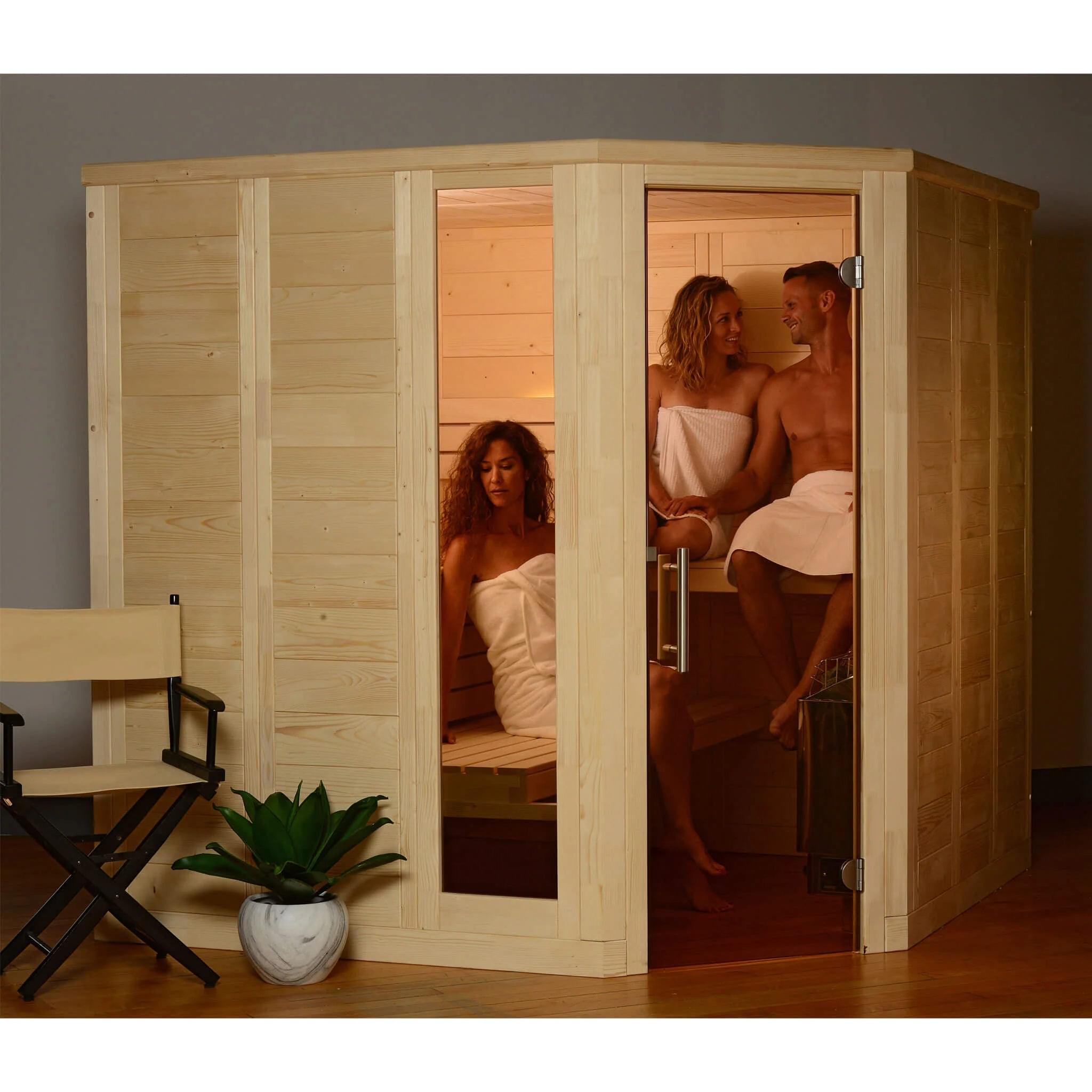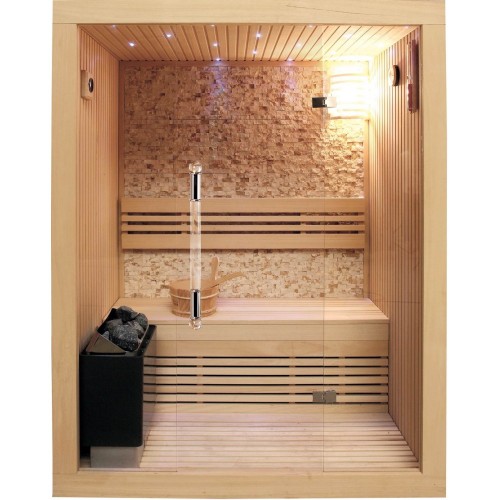Traditional Sauna Fundamentals Explained
Table of ContentsThings about Traditional SaunaThe 6-Minute Rule for Traditional SaunaFascination About Traditional SaunaSome Known Facts About Traditional Sauna.All about Traditional Sauna
Most of the weight lost in a sauna is water loss and is re-gained upon rehydrating. Without a doubt sauna can be a vital component of a healthy weight loss program. To check out the differences in between traditional and IR saunas, I will divide these right into proven, academic, and produced differences.Therefore, the best point in the saunawhich is at the ceiling straight over the sauna heateris generally between 185 and 190 F. Claims that a typical sauna goes beyond 200 F is just not true and not suitable for electrical saunas offered in the US. The temperature level for a far-infrared sauna is normally set in between 120 and 140 F; however, unlike the conventional sauna, the goal in and IR room is not to achieve a high temperature.

When a standard sauna has been appropriately heated up, the sauna wall surfaces are warm, the air temperature level has achieved set temperature level and the rocks are super heated. As a fascinating side note, the warmed walls and the rocks are sending out far-infrared heat, integrated with the heated air, to create an "enveloping warm".
The Best Strategy To Use For Traditional Sauna
When the high temperature is accomplished, the components cycle on and off to keep the high temperature level. Most standard sauna individuals delight in putting water over the rocks to produce vapor to increase sauna humidity levels. The advantages of putting water over the rocks include: making the area extra comfortable, dampening the nasal passages, and allowing the use of aromatherapy by mixing necessary oils with the water.

When the energy gets in the body, it causes the body temperature to boost and inevitably causes perspiration. In an infrared sauna it is necessary for the emitters/heaters to continue to be on almost frequently. Since there is no mass of rocks to preserve heat, the sauna will certainly cool if the emitters turned off.
What Does Traditional Sauna Mean?
As mentioned over, the sauna bather in an infrared area intends to position himself before running emitters to obtain maximum take advantage of the warmth. The home heating time for the two spaces can be really various, depending on just how the rooms are utilized. For a typical sauna, a bather needs to allow 30-40 minutes for have a peek at this website the space to attain a wanted temperature and to correctly pre-heat the rocks.

A well constructed sauna will generally attain a temperature of 150-160 F in regarding 30-40 mins. For hotter temperatures, the space may require to warm for a longer duration.
To some, 15 mins was "wasted" while the infrared energy heated the wood panels instead than heating a body, while others discover a pre-heated room to be much more comfortable and think an elevated beginning temperature level is required to begin perspiring. The size of recommended usage for each area is roughly the exact same (10-15 mins per session); nonetheless, as a result of the reduced air temperature levels and the capacity to really feel the impacts of infrared warmth much faster than a conventional sauna, it is not uncommon for a person to invest an overall of 20-30 minutes in an infrared sauna.
10 Easy Facts About Traditional Sauna Described

The typical cost per kWH of electrical power in the U.S. is approximately $0.11, so a 4.5 kW heating system will cost roughly $.50 to run for one hour, if the heating system runs constantly for one hour. Normally a sauna heating system will compete 75% of the initial hour and 50% of succeeding hours on because the components cycle once the set temperature is accomplished.
A two individual far-infrared area is generally physically smaller sized than a typical sauna, commonly regarding 4' x 4' or smaller. The IR furnace is typically 1.5-1.7 kW making use of a 120 volt 15 amp plug-in service. Considering that the space can be used quicker than a sauna room, we will certainly presume the room is utilized for to of an hour consisting of warm up time.
There is a rarely discussed distinction in the social experience in between the 2 rooms. While useful source our society has actually lost several of the social advantage of the Click This Link conventional sauna experience, it can be really socially fulfilling (Traditional Sauna). From family members time in the sauna, to heart-felt discussions with loved ones, to sauna partiesthe typical sauna experience can cause intimate mingling
Some Ideas on Traditional Sauna You Need To Know
Many greater end infrared areas consist of colored light therapy, sound systems and full-glass fronts.